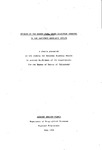STUDIES ON THE GROUND FLORA UNDER SELECTION FORESTRY IN THE TAVISTOCK WOODLANDS ESTATE
| dc.contributor.author | HARRIS, MARLENE JENSSEN | |
| dc.contributor.other | School of Geography, Earth and Environmental Sciences | en_US |
| dc.date.accessioned | 2013-09-18T09:12:33Z | |
| dc.date.available | 2013-09-18T09:12:33Z | |
| dc.date.issued | 1986 | |
| dc.identifier | NOT AVAILABLE | en_US |
| dc.identifier.uri | http://hdl.handle.net/10026.1/1821 | |
| dc.description.abstract |
This thesis investigates the effect of the Bradford-Hutt system of selection forestry management, known as B-Plan, on the ground flora of the Tavistock Woodlands in Devon and Cornwall, England. After a review of continental selection forestry systems, the Bradford-Hutt system and its economic, production and ecological advantages are described. The study was conducted in four phases. Firstly, the canopy types were described. Then the ground flora was examined and related to canopy type, past history and management. Secondly, a vegetational community gradient was identified and examined in relation to the environmental gradients, canopy closure and soil moisture and to effects of B-Plan management. The effects of B-Plan management on the shrub layers were then investigated. Thirdly, the effect of B-Plan management on the light climate was studied using hemispherical photographs and variations in light were related to different stages of the B-Plan system. Fourthly, the seed bank and the phenology of certain ground flora species were examined, Successional changes in the ground flora and in the seed bank with increasing maturity of the areas under B-Plan management were identified. The system was found to create a mosaic of vegetational communities at differing successional stages within the space of the basic B-Plan management unit of 18 x 18m. Unlike the successional changes over time in natural woodlands or even-aged plantations, these changes in areas under. B-Plan management occur in space as well as time. This sustained yield system of commercial forestry management which resembles the traditional coppice with standards system, was found to have a beneficial effect on ground flora diversity and abundance. The system deserves more widespread adoption in woodland sites which require the integration of amenity value, economic return and an ecologically balanced ecosystem. | |
| dc.language.iso | en | en_US |
| dc.publisher | University of Plymouth | en_US |
| dc.title | STUDIES ON THE GROUND FLORA UNDER SELECTION FORESTRY IN THE TAVISTOCK WOODLANDS ESTATE | en_US |
| dc.type | Thesis | |
| plymouth.version | Full version | en_US |
| dc.identifier.doi | http://dx.doi.org/10.24382/4179 | |
| dc.identifier.doi | http://dx.doi.org/10.24382/4179 |
Files in this item
This item appears in the following Collection(s)
-
01 Research Theses Main Collection
Research Theses Main


